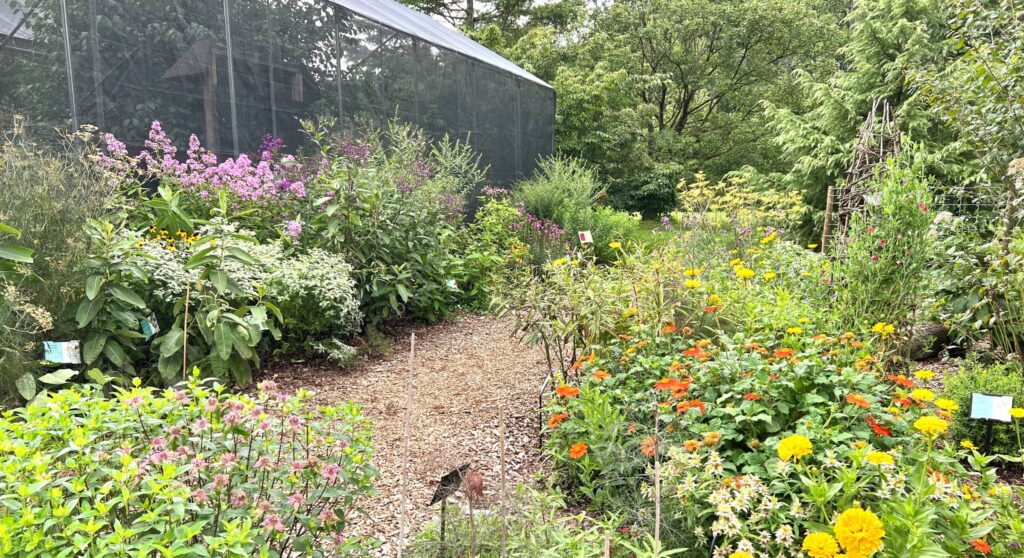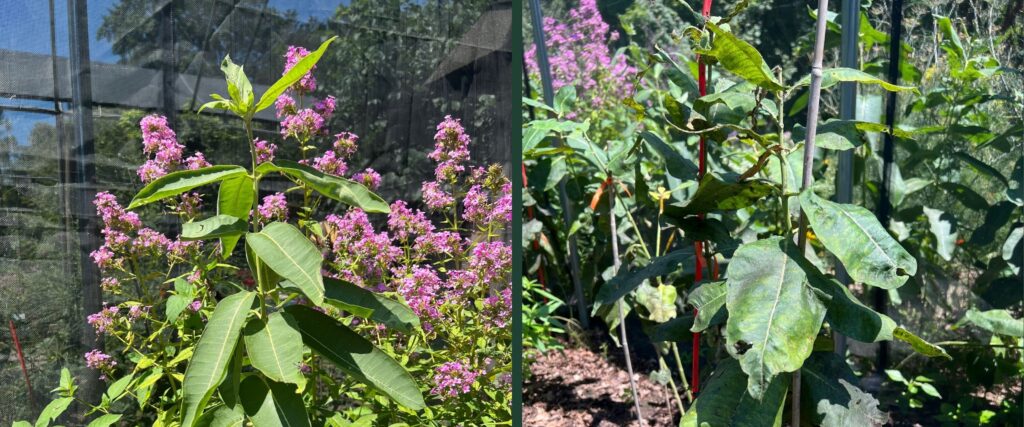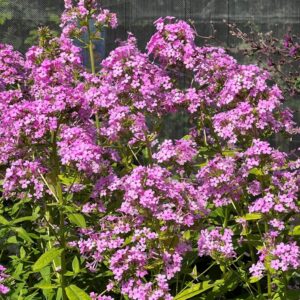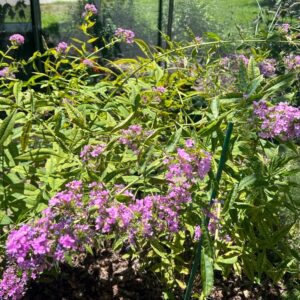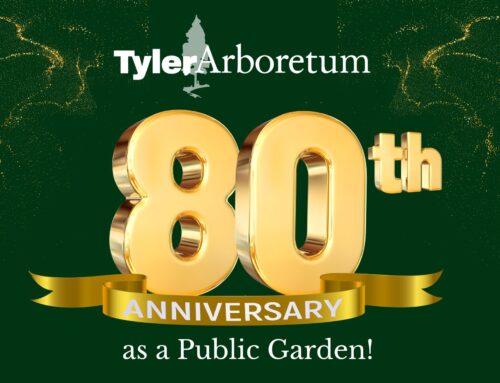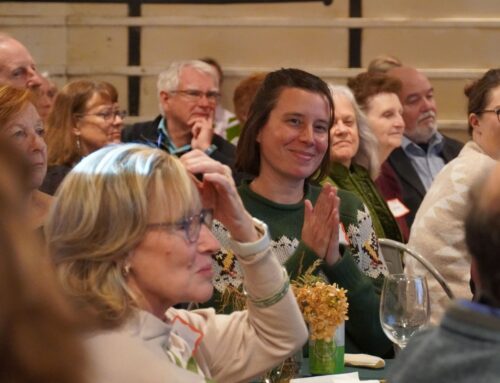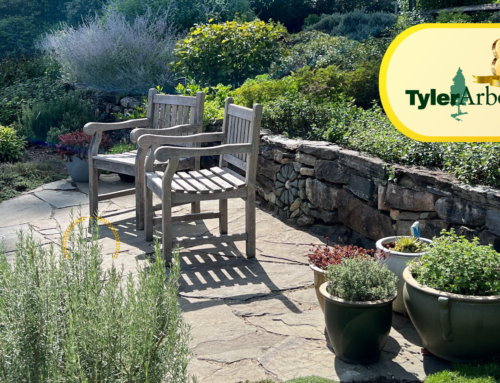“The Butterfly House is meant to inspire; to encourage discovery and stewardship.”
I’m lucky to have a talented team of volunteers and coworkers excited to provide input, hard work, and encouragement as we renovated the gardens at Tyler’s Pollinator Preserve over the last two years. This year has provided so much more regarding healthy plants, visiting insects, and opportunities for discovery and learning in the outer gardens. At the same time, it has also highlighted our challenges under the netting inside the Butterfly House. Once we realized the extent of the differences, it became very evident that we needed to make some additional changes. A typical day interacting with visitors may help you understand some of the issues you may not have noticed. Their tour started like many, but this astute couple voiced what was exactly on our minds, just as others have done this year.
“We just bought a new home and can’t wait to plan our gardens,” a couple tells me as they join me for a tour through the Pollinator Preserve.
Anxious to support our dwindling pollinator population, they are keenly interested in selecting the right plants to help the insects. We get started in the gardens outside of the Butterfly House. We see honey bees busy at the monarda while three species of butterflies are sipping nectar among the zinnias. The butterflies pass directly in front of us, many heading towards the phlox. The mountain mint is most impressive, with the array of native bees and wasps easily finding the tiny flowers. A honey bee joins in, and then a butterfly. We spot a hummingbird up ahead, darting at the cardinal flowers. We watch the caterpillars on the milkweed and fennel, then spot a chrysalis hanging from a large leaf. They lean down to see the black swallowtail eggs on the fennel and marvel at how tiny they are.
We enter the butterfly house, and their eyes light up as they see the butterflies, some at rest on the screen and others fluttering among the flowers. They notice the milkweed and ask why the leaves are so dark and droopy compared to the plants a few feet away, just outside the netting. I explain how the netting keeps the butterflies in and most of the predators out, but it also blocks 50% of the sunlight causing the plants to suffer in various ways. There are long stems on many plants as they reach for the light, and fewer flowers than those on the same plant outside. Insects such as aphids spend the winter in the soil, but the netting blocks their natural predators from entering the Butterfly House to consume them. Unfortunately, even the daily removal of aphids doesn’t prevent the milkweed’s early demise.
The rearing cage holds a couple of large monarch caterpillars and a chrysalis, and the couple appreciates seeing them up close. The cocoons from the cecropia moth caterpillars are huge, and we talk about the value of the native cherry tree to this and many other moths and butterflies. As we near the exit, they see the phlox, the same variety they admired outside. The contrast is evident as they mention the yellowing leaves on the long stems and far fewer flowers cascading towards the ground. They already know why.
I know the next question coming from this astute couple. “Why do you put the netting up? We saw so much more outside, and it seems like the netting causes issues.” It is the same question we’ve been asking ourselves for over two years. Some of the issues caused by the netting are easily observed. Others are less obvious to our visitors, such as never knowing if there is enough nectar, the good chance of butterfly siblings mating, uncontrolled egg laying, the imbalance of insects, and far too many butterflies spending the day on the ceiling, unable to be released.
I could provide more examples, and while we are more than willing to tackle these challenges, this artificial environment does not provide the best ecosystem for the health of plants and insects. The Butterfly House is meant to inspire; to encourage discovery and stewardship. The entire Pollinator Preserve is a resource for home gardeners and an inspiration for those unable to garden at home. The enclosed Butterfly House succeeds by providing up-close viewing of all stages of the life cycle of butterflies and the plants they need to survive and multiply. But is it the best way to reach this goal? At the core, selecting butterflies over other native insects in an artificial environment creates an imbalance in nature.
Over the next few months, our team will gather with experts in entomology, horticulture, and those well experienced in the Butterfly House. We will follow the science and come up with a plan going forward. Our plan will include a more natural and safe home for these insects. We will be back to keep you updated as we strive to turn this ‘house’ into more of a ‘home’ for those that depend upon it.


